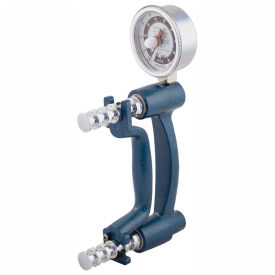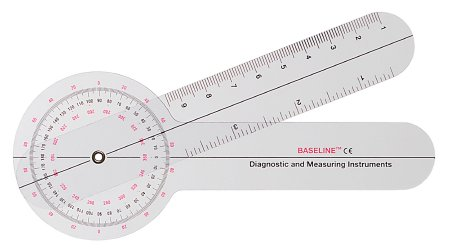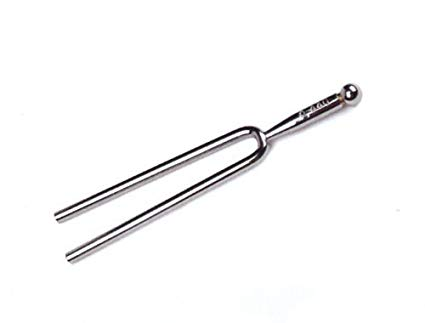Free shipping orders over $50
Goniometer / Hand Dynamometer / Medical Tuning Fork
AvaCare Medical carries a full range of diagnostic instruments, including hand dynamometers, goniometers, Weber tuning forks, and more. Medical professionals utilize these tools to test a patient’s ability in a related area. Read More...
-
Goniometers
Starting at $7.42 -
Baseline Sit n' Reach Trunk Flexibility Box
Starting at $123.24 -
Baseline AcuAngle Adjustable-Feet inclinometer
Starting at $101.79 -
Baseline Bubble Inclinometer
Starting at $72.62 -
Baseline Pocket Sized Metal Goniometer - 180 Degree Range
Starting at $21.12 -
Baseline Metal Goniometer - 180 Degree Range
Starting at $36.96 -
Baseline X-ray Radiopaque Goniometer - 180 Degree Range
Starting at $44.88 -
Baseline Plastic Digit Goniometer - 1-finger Design
Starting at $28.61 -
Baseline Metal Finger Goniometer
Starting at $42.24 -
Baseline Metal Absolute+Axis Goniometer - Digital 180 Degree Range
Starting at $76.05 -
Baseline Plastic Absolute+Axis Goniometer - 12 Inch Arms
Starting at $9.25
Hand Dynamometer for Dynamometer Test

Hand dynamometers are used to evaluate a patient’s grip (aka isometric) strength. The hand dynamometer test is used by medical professionals to assess the patient’s isometric ability often without the patient even sensing the movement of the handle of the hand dynamometer. Often, the results of this assessment are used to by physical therapists develop a physical rehabilitation plan for the patient. Hand held dynamometers are also used by sports players and those in strength training programs to test hand grip strength.
A hand dynamometer is also referred to as a grip strength dynamometer, or as a hand grip dynamometer.
Medical Goniometer

A medical goniometer is a plastic or metal device of varying size. It is used to measure the range of motion (ROM) around a joint, such as the knee, waist, fingers, or wrist. Occupational & physical therapists often utilize the goniometer in their patients’ therapy plan to track rehabilitation progress over time.
Goniometer Parts
There are three parts to a goniometer:
Fulcrum: The fulcrum is the protractor-like circle or semi-circle at the center of the goniometer with a sphere-shaped measuring scale that goes along its border. The scale on a goniometer with a half-circle body will usually go from 0-180 degrees, and the scale for a full circle model can reach from 0-360 degrees.
Stationary Arm: This arm is attached to the fulcrum of the goniometer. When moving it, the body will automatically move as well.
Movable Arm: This arm is attached at the axis (middlemost point) to the fulcrum with a screw-like piece. It can pivot a full circle around the body of the goniometer. The moveable arm
How to Take Goniometer Measurements
The medical goniometer works as follows: The fulcrum of the goniometer is aligned at the joint, and the stationery arm is aligned along the limb that’s being measured. The movable arm is placed along the other limb.

The finger goniometer is the smallest kind of goniometer utilized for medical purposes.
Medical Tuning Fork

A medical tuning fork is a metal device that is similar in appearance to a two-pronged fork. The two prongs form the shape of a U.
Hitting a medical tuning fork will cause it to vibrate and create sounds. Specialists evaluate a patient’s hearing ability and ability to vibration sense by testing his response to the sounds and vibrations created by the tuning fork. This is known as a tuning fork test.
Here are some details about the tests these tools are used for.
Rinne Test
The Rinne test is used to determine the patient’s hearing ability. It tests for unilateral (one-sided) conductive hearing loss, and is performed with a tuning fork: The vibrating tuning fork is placed against the patient’s mastoid bone, and the patient informs the specialist when he can’t hear the sound any longer. When the sound isn’t audible to the patient, the tuning fork is moved so that it is 1-2 cm away from the auditory canal. Like before, when the patient can’t hear the sound, he lets the specialist know.
How it Works: The Rinne test compares the perception of sounds transmitted by bone conduction (through the mastoid) to those transmitted through air waves.
Since a Rinne test only evaluates for conductive (middle ear related) hearing loss, a Weber test should also be performed to check for sensorineural (inner ear related) hearing loss.
Weber Test
A Weber test can detect hearing loss and evaluate whether it is caused by a problem in the middle or inner ear. It’s performed with a vibrating tuning fork. The weber tuning fork is placed on the philtrum, in the middle of the forehead, or on the center of the head. If the patient hears the sound louder or better in one ear, this will indicate hearing loss in the other ear. Through the Weber test, an audiologist can check whether the patient is suffering from conductive or sensorineural hearing loss.
Conductive Hearing Loss:This is caused by a problem in the ear canal, the middle ear, or the bones in the middle ear. |
Sensorineural Hearing Loss:This is caused by an issue in the inner ear (the cochlea, the balance mechanism, or the vestibular or the auditory nerve.) |
|
Common Causes:
|
Common Causes:
|
Overview
All of these products; the hand dynamometers, goniometers, and medical tuning forks, are utilized by professionals for diagnostic tests. The hand dynamometers help them evaluate a patient’s grip strength, the medical goniometer allows them to test a patient’s range of motion in a joint, and the medical tuning fork has two medical purposes; it’s used to test a patient’s vibration sensation and auditory ability.
Whichever of these therapy devices you require, you can find them easily and quickly at AvaCare Medical.
You may find it helpful to note that AvaCare Medical also carries many other types of therapy equipment, including biofreeze gel, theraputty, and other kinds of physical therapy supplies.
Contact us today at 1.877.813.7799, and we’ll help you find everything you need to equip your medical office with!














